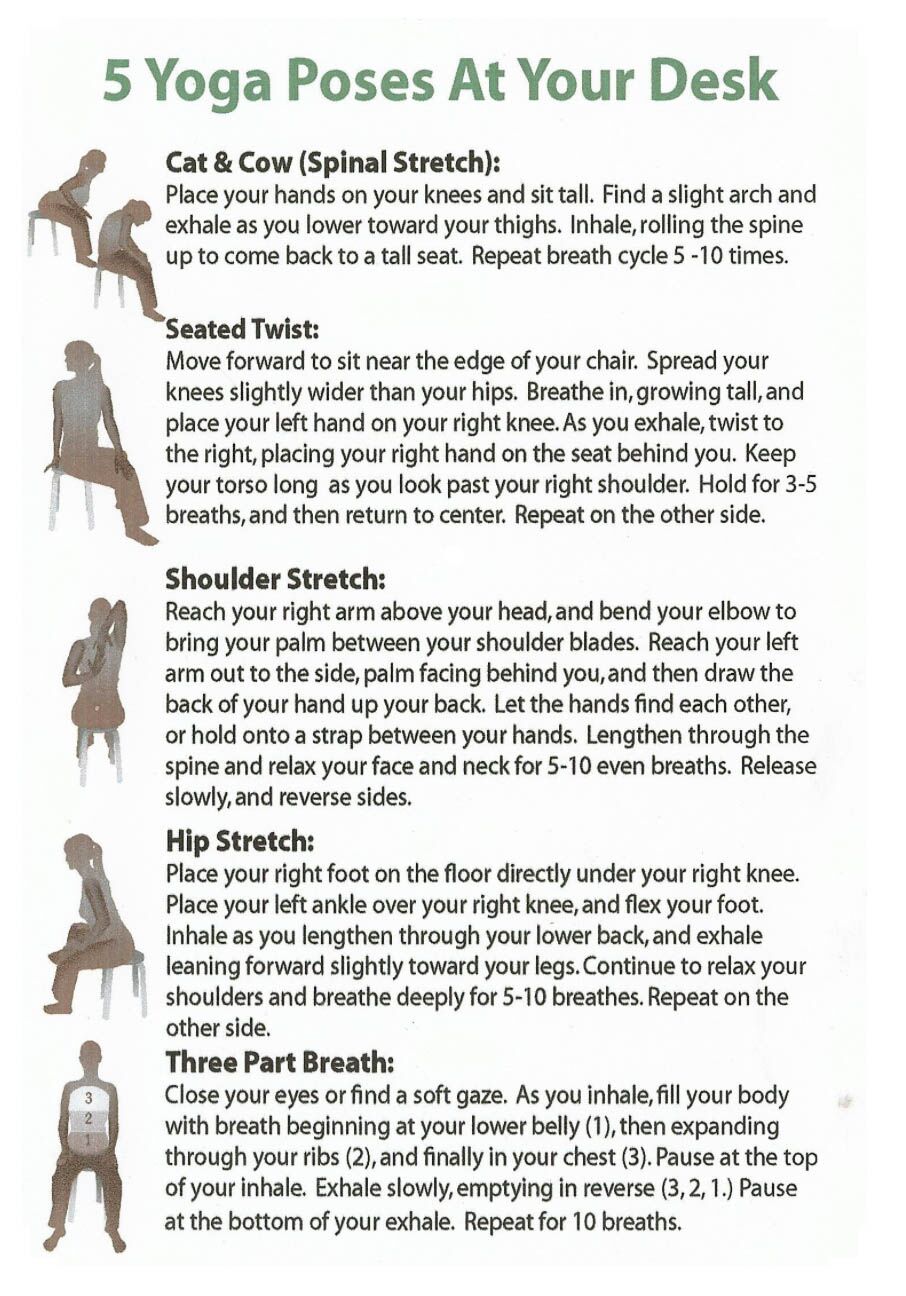Just Keep Moving
Just Keep Moving
If you are sitting at your desk right now reading this, you may be wondering how it’s already September and summer is (un)officially over. The kids are back in school. Students from all over the globe have reentered our neighborhoods and roadways. The traffic suddenly seems to be more packed. Alas, another beautiful New England season is behind us and Autumn is just around the corner.
One thing you will start to notice immediately as you return to your normal routine is that your tolerance for sitting (and co-workers) has diminished significantly and those aches and pains slowly start to creep back in. Before you make your third visit to Starbucks before 2 pm today, consider doing something for yourself that will have longer lasting rewards than a 30 minute caffeine jolt.
Science has proven time and again that as little as 5 minutes of exercise can have a dramatic impact on your overall health. Simply taking the time to take a deep breath can send an immediate message to your brain to release Acetylcholine (a primary neurotransmitter who’s basic functions involve the control of skeletal muscles via activation of the motor neurons as well as stimulating the muscles of the body). By taking just a 5-10 minutes every hour to do some basic yoga, stretching, corrective exercises, mobility work, MOVEMENT, you can allow your body to slowly start to acclimate to your return to work. To paraphrase Dory from Finding Nemo, “Just keep moving!” That’s really all it takes. Lack of varied movement over a prolong duration of sitting (more than 50 minutes) can cause injury and potentially long term damage to tissues. Check out these simple poses that you can print out and keep at your desk as a reminder to ‘just keep moving’ throughout the course of your work day.

Ready to #feelbetter?
You're just a click away from a wicked good massage!
-

60 Minute Massage Gift Card
$170.00 Add to cart -

90 Minute Massage Gift Card
$255.00 Add to cart -

Mini Aer Small Room Air Purifier
$149.00 Add to cart -
Sale!

Thera-Pearl Sports Pack/Hot Cold
Original price was: $14.99.$12.99Current price is: $12.99. Add to cart -

3 Somadome Sessions Gift Card
$135.00 Add to cart -

20 Minute Somadome Gift Card
$45.00 Add to cart -
Sale!

TheraBand® Stretch Strap
Original price was: $19.99.$14.99Current price is: $14.99. Add to cart -

TheraBand CLX Connective Loop
$14.99 Select options
Muscle Strains
A strain, sometimes referred to as a pulled muscle, is a muscle injury produced by excessive tensile stress that causes fibers to tear within the tissue. A muscle strain does not usually result from excess stretch alone, but from a combination of tension and contraction. Muscle strains can develop when excess tension is placed on…
Read MoreShin Splints or Compartment Syndrome?
One of the most common overuse injuries affecting the lower extremity is the condition known as shin splints. While the term shin splints routinely is used, especially among the athletic population, it does not represent a specific clinical pathology. Instead, it describes chronic shin pain resulting from overuse. It occurs in two regions of the…
Read MoreAn Alternative Approach to Stretching
Clinicians, athletes and rehabilitation specialists advocate stretching as a means for injury prevention and treatment. The primary purpose of any stretching technique is to enhance pliability and flexibility in the soft tissues. It is also routinely incorporated with massage in the treatment of pain and injury conditions. There are many different stretching techniques, which all…
Read MoreGanglion Cysts
The highly refined palpation skills of massage practitioners are such that we often identify tissue abnormalities before the client is aware of them. An indication that we should refer a patient for further evaluation is when we identify something we aren’t sure of but know shouldn’t normally be there. One such example may occur with…
Read MoreWhat Is the “End Feel”?
Some of the most valuable assessment information is derived from relatively simple procedures such as passive range-of-motion tests. While many massage practitioners have been exposed to the fundamental concepts of active and passive range-of-motion testing, most have not learned how to use this information effectively in a clinical environment. In this article, we will focus…
Read MoreHow Accurate Is That Test?
Physical assessment is considered one of the most accurate ways to assess function of the locomotor tissues of the body. While we can often gain valuable information about structural problems through high-tech diagnostic procedures like X-ray or MRI, these procedures tell us very little about the function of the tissues involved in creating and limiting…
Read MoreWhen Is It Tendinitis?
Tendinitis is one of the most common diagnoses for soft tissue pain resulting from repetitive motion. As repetitive motion disorders have dramatically increased, so has the incidence of tendinitis. However, recent investigations into the cellular nature of tendon pathologies have brought forth interesting discoveries that may alter the way tendinitis is treated. In this month’s…
Read More- « Previous
- 1
- …
- 18
- 19
- 20

